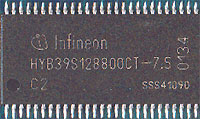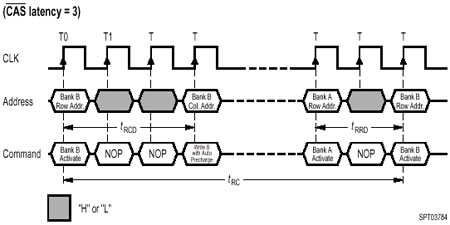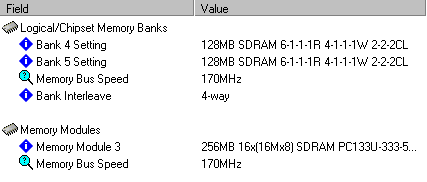 While SDR
technology is slowly but surely being phased out, there still an abundance of
consumers who haven't really seen the need to go DDR. With SDR system bus speeds
hitting 166+ MHz; actual useable memory bandwidth could easily challenge a
well-tweaked DDR system.
While SDR
technology is slowly but surely being phased out, there still an abundance of
consumers who haven't really seen the need to go DDR. With SDR system bus speeds
hitting 166+ MHz; actual useable memory bandwidth could easily challenge a
well-tweaked DDR system.
Recently the OCZ Technology shipped us a stick
of their 256MB ICE PC150 memory ($36). Based on a 6-layer PCB, the sticks are supposed to use hand picked Infineon
chips capable of 150+ speeds. Having never used a stick of memory that could even come
close to rivaling my 256MB PC100 Apacer SDRAM I certainly didn't have high expectations that
the Ice150 could compete.
Why would anyone want PC150 memory in the first place? Well, it's
more for the extreme overclockers. These are the people who totally want to stress
out their systems as many programs (especially games) offer better performance at higher
bus speeds. With chipsets being as refined as they, a person with either an i815/E/EP or
say KT133A chipset could run at 150 MHz+. Usually it's the memory that acts as
the limiting factor.
Looking at the Ice 150, the first thing you'll notice is the pretty blue
PCB (good for case modders wanting all matching components for their blue motherboards) and the
tiny OCZ silk-screen.

On closer inspection of the DRAM, we can see
that it is indeed using the same DRAM chips as my Apacer (which easily does 168 MHz at 2-2-3-6) and
is the same DRAM as Mushkin Rev 3 PC150 SDRAM! The actual timing diagram for the Infineon HYB39S128800CT-7.5
chips is shown below.

So
how far was I able to push this memory? At the most aggressive setting of
2-2-2-5, it was able to post at an astounding 173 MHz! However while
booting into Windows it would BSOD, so that didn't prove very useful. Keeping
those memory settings, the highest the Ice 150 would run stable at was 170 MHz.
At the most conservative setting of 3-3-3-6, it would do 173 MHz stable,
however, I found most benchmarks didn't like those particular settings much.

Well, here are the system spec's we used to test the Ice 150 module.
| PCstats Test System
Specs: |
| Computer: |
Athlon 1.0 GHz AYHJA Y at around 1.6 GHz
Iwill KK266-R Ver 1.2 BIOS May 15/2001
MSI StarForce 822 (GeForce 3 200/460)
30 GB IBM DeskStar 75 GXP
SB
Live! Platinum 5.1 256 MB |
| Software: |
Windows 98 SE
DirectX 8.0
Via 4in1 4.33V
Beta DetonatorXP 21.81 |
| Test Memory: |
OCZ ICE PC150 ram at 150 MHz (2-2-2-5) CPU speed 11 x 150 = 1650
MHz
256 MB OCZ ICE PC150
ram at 170 MHz (2-2-2-5) CPU speed 9.5 x 170 = 1615 MHz |
| Benchmarks: |
SiSoft Sandra 2001TE
3DMark2000 Ver 1.1
3DMark2001
MDK2
Quake III Arena Ver
1.17 |
Some people have asked why I overclock the CPU when testing memory. The answer is a
simple one. While bus speed is most important in terms of memory bandwidth, the
processor does play a secondary role. The higher the processor speed, the higher the bandwidth.
If you don't believe me, just try it out!

